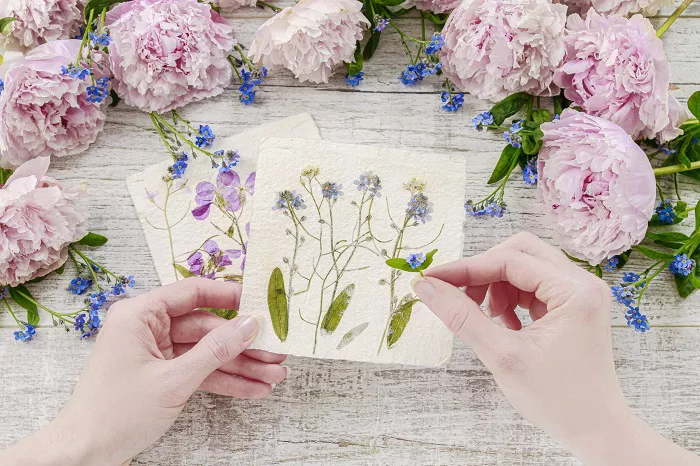Dried flowers bring a timeless beauty to any space, but mold can quickly turn these charming decorations into a mess. Understanding how to prevent mold is essential for preserving their allure. In this article, we will explore practical tips and techniques to keep your dried flowers looking fresh and mold-free.
Understanding the Problem
The Nature of Mold
Mold is a type of fungus that thrives in damp, warm environments. It can spread rapidly, especially if conditions are favorable. When it comes to dried flowers, mold can not only ruin their appearance but also pose health risks. Therefore, it is crucial to take preventive measures to avoid this issue.
Common Causes of Mold
Several factors can contribute to mold growth on dried flowers. High humidity levels, poor ventilation, and the presence of moisture are the primary culprits. Additionally, using flowers that were not properly dried can also lead to mold problems. Understanding these causes will help you take the necessary steps to prevent mold.
Preventive Measures
Proper Drying Techniques
The first step in preventing mold is to ensure that your flowers are properly dried. There are several methods to achieve this, including air drying, silica gel drying, and using a microwave. Each method has its advantages and disadvantages, so choose the one that best suits your needs.
Air Drying
Air drying is a natural and cost-effective method. To air dry flowers, simply gather them into small bundles and hang them upside down in a well-ventilated area. Ensure that the area is dry and away from direct sunlight, as too much light can fade the flowers’ colors. It may take several weeks for the flowers to dry completely, but the result is worth the wait.
Silica Gel Drying
Silica gel is a desiccant that absorbs moisture effectively. To dry flowers using silica gel, place the flowers in a container and cover them completely with the gel. Seal the container and let it sit for a few days. The silica gel will absorb the moisture from the flowers, preserving their shape and color. This method is particularly useful for delicate flowers that may not hold up well during air drying.
Microwave Drying
Microwave drying is a quick method, but it requires caution. Place the flowers between layers of microwave-safe paper towels and microwave them on low power for short intervals. Check the flowers frequently to ensure they do not overheat or burn. This method is best for small, sturdy flowers.
Choosing the Right Flowers
Not all flowers are suitable for drying. Some flowers, like roses and lavender, dry well and retain their beauty. Others, such as tulips and daffodils, may not fare as well. When selecting flowers for drying, choose those that are in good condition and free from any signs of mold or disease. Fresh, healthy flowers are more likely to dry well and remain mold-free.
Storage Tips
Proper storage is key to preventing mold. Once your flowers are dried, store them in a cool, dry place with good ventilation. Avoid areas with high humidity, such as basements or bathrooms. If possible, store the flowers in airtight containers to protect them from moisture and pests. Adding a desiccant, like silica gel packets, can also help maintain a dry environment.
Monitoring and Maintenance
Regularly inspect your dried flowers for any signs of mold. Early detection is crucial for preventing the problem from spreading. If you notice any mold, remove the affected flowers immediately and clean the surrounding area thoroughly. Proper maintenance and monitoring will help ensure that your dried flowers remain beautiful and mold-free.
Additional Tips
Using Natural Preservatives
Certain natural substances can help prevent mold growth. For example, sprinkling a small amount of baking soda or cornstarch on your dried flowers can absorb excess moisture. These substances are safe and effective, making them a great addition to your mold prevention routine.
Creating a Mold-Resistant Environment
Creating an environment that is inhospitable to mold is another effective strategy. Ensure that your home or storage area has proper ventilation and low humidity levels. Using dehumidifiers or air purifiers can help maintain a mold-free environment. Additionally, keeping the area clean and free from dust can also reduce the risk of mold growth.
Creative Uses for Dried Flowers
If you are concerned about mold, consider using dried flowers in ways that minimize their exposure to moisture. For example, you can create beautiful pressed flower art or use dried flowers in potpourri. These creative uses not only showcase the beauty of dried flowers but also reduce the risk of mold.
Conclusion
Preventing mold on dried flowers is essential for preserving their beauty and ensuring a healthy environment. By following proper drying techniques, choosing the right flowers, and storing them correctly, you can significantly reduce the risk of mold. Regular monitoring and maintenance, along with the use of natural preservatives, will help keep your dried flowers looking fresh and mold-free. With these tips, you can enjoy the timeless beauty of dried flowers in your home for years to come.


